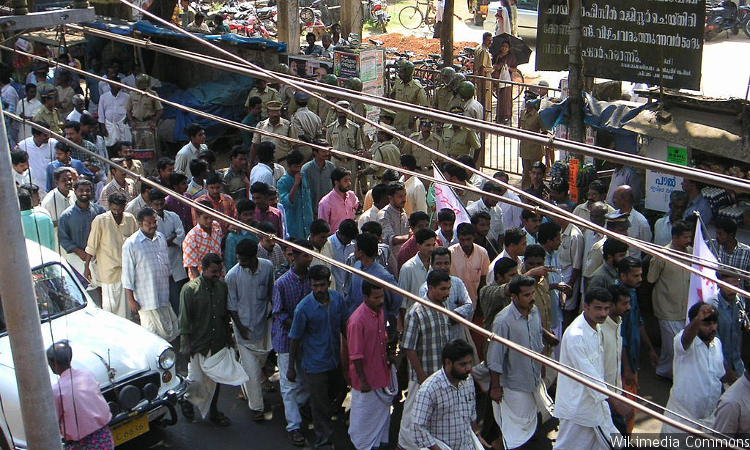BJP's Claim of Unemployment Drop: Data Confusing, Unreliable

Members of the Democratic Youth Federation of India (DYFI) during a rally against unemployment in Haripada, Kerala. An analysis of various data sets reveals that unemployment data in India is either outdated or unreliable.
On March 5, 2017, the Bharatiya Janata Party (BJP) tweeted that “unemployment rate falls sharply, as Modi government’s efforts to create rural employment are yielding results”.
Unemployment rate falls sharply, as Modi government's efforts to create rural employment are yielding results. pic.twitter.com/p7F4VjHdpe
— BJP (@BJP4India) March 5, 2017
The tweet claimed that India’s unemployment rate had fallen from 9.5% in August 2016 to 4.8% in February 2017, based on a report by State Bank of India (SBI) Ecoflash.
The unemployment rate in Uttar Pradesh registered the maximum decline during August 2016 to February 2017 from 17.1% to 2.9%, followed by Madhya Pradesh (10% to 2.7%), Jharkhand (9.5% to 3.1%), Odisha (10.2% to 2.9%) and Bihar (13% to 3.7%), Indian Express reported on March 5, 2017.
A FactChecker analysis of various data sets reveals that unemployment data in India is either outdated or unreliable, as multiple government reports and analyses give different figures.
India’s unemployment rate was 4.68% as on March 5, 2017, which is in sync with the BJP’s claim, according to real-time data from the Bombay Stock Exchange (BSE). Urban India reported a higher unemployment rate (6.13%) than rural India (3.9%).
On August 31, 2016, India’s unemployment rate was 9.7%; urban India had higher unemployment (11.14%) than rural India (9.01%), the BSE data reveal.
India’s unemployment rate was reported to be 3.7% in 2015-16, according to data presented in the Lok Sabha (lower house of Parliament) on February 6, 2017, by labour minister Bandaru Dattatreya.
However, on the same day, minister for state for planning Rao Inderjit Singh informed the Rajya Sabha (upper house of Parliament) that the unemployment rate was 5% and rising in India, especially among the backward classes (OBCs), Hindustan Times reported on February 6, 2017.
If the unemployment was declining as per the SBI report, why did the government admit to rising unemployment in the Parliament?
Over 30% of youth aged 15-29 in India are not in employment, education or training (NEETs), according to this 2017 report by Organisation of Economic Cooperation and Development (OECD), Livemint reported on March 6, 2017.
India needs 23 million jobs annually, according to a Kotak Securities report, but over the last 30 years, the country has created about seven million jobs every year, IndiaSpend reported on February 23, 2016.
The government needs to focus on improving the measurement of employment and wages even as it works towards improving the ease of doing business and enhancing India’s manufacturing and employment capability, economists Dharmakirti Joshi and Dipti Deshpande from CRISIL had written in a column for Financial Express in June 2015.
“In July 2014, the Labour Bureau released the provisional results from its sixth economic census. This data pointed towards an increase in job creation rate in India in the last 5-6 years—a finding not supported by the NSSO data, sending out a contradictory message,” wrote Joshi and Deshpande.
(Saha is an MA Gender and Development student at Institute of Development Studies, University of Sussex.)


